Xiaodan Liang
A Data-Centric Framework for Composable NLP Workflows
Mar 03, 2021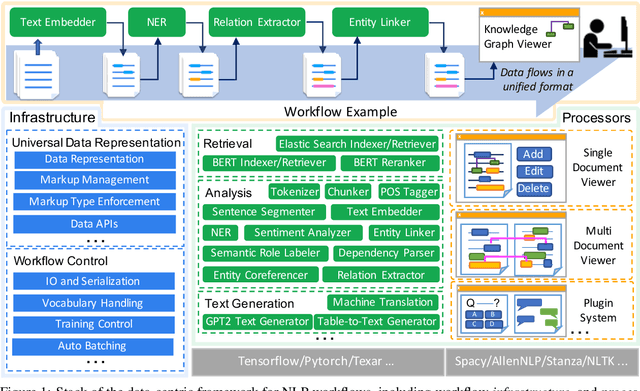
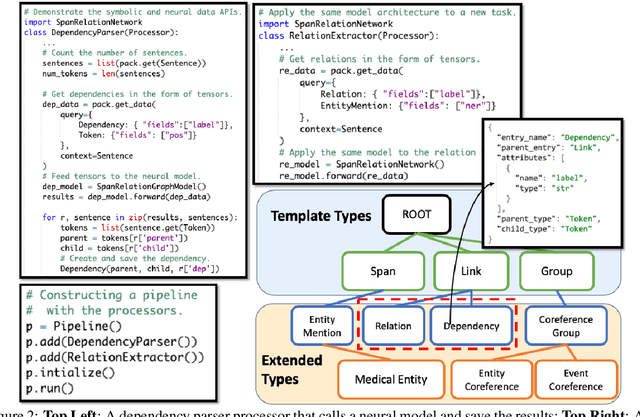
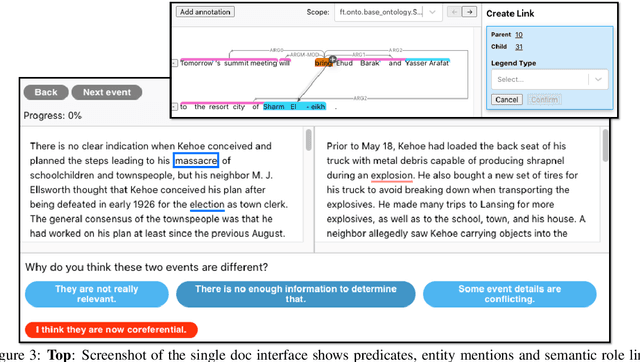
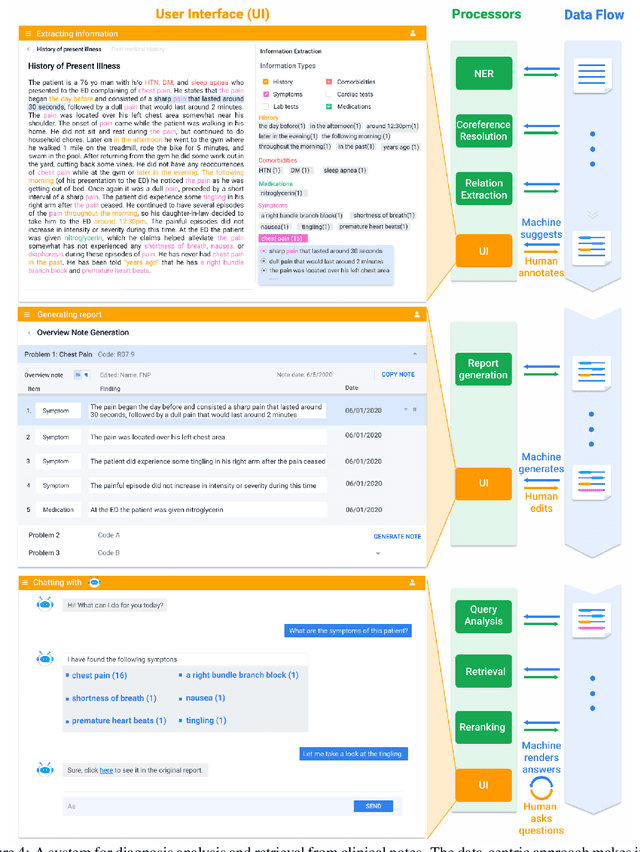
Abstract:Empirical natural language processing (NLP) systems in application domains (e.g., healthcare, finance, education) involve interoperation among multiple components, ranging from data ingestion, human annotation, to text retrieval, analysis, generation, and visualization. We establish a unified open-source framework to support fast development of such sophisticated NLP workflows in a composable manner. The framework introduces a uniform data representation to encode heterogeneous results by a wide range of NLP tasks. It offers a large repository of processors for NLP tasks, visualization, and annotation, which can be easily assembled with full interoperability under the unified representation. The highly extensible framework allows plugging in custom processors from external off-the-shelf NLP and deep learning libraries. The whole framework is delivered through two modularized yet integratable open-source projects, namely Forte1 (for workflow infrastructure and NLP function processors) and Stave2 (for user interaction, visualization, and annotation).
SparseBERT: Rethinking the Importance Analysis in Self-attention
Feb 25, 2021

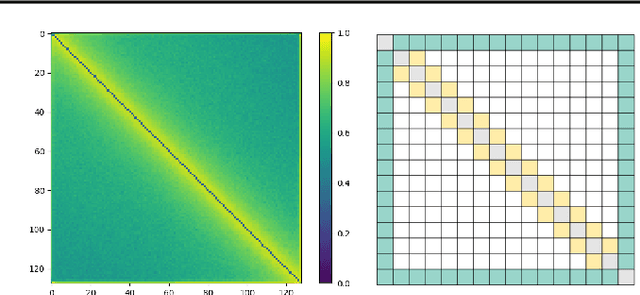

Abstract:Transformer-based models are popular for natural language processing (NLP) tasks due to its powerful capacity. As the core component, self-attention module has aroused widespread interests. Attention map visualization of a pre-trained model is one direct method for understanding self-attention mechanism and some common patterns are observed in visualization. Based on these patterns, a series of efficient transformers are proposed with corresponding sparse attention masks. Besides above empirical results, universal approximability of Transformer-based models is also discovered from a theoretical perspective. However, above understanding and analysis of self-attention is based on a pre-trained model. To rethink the importance analysis in self-attention, we delve into dynamics of attention matrix importance during pre-training. One of surprising results is that the diagonal elements in the attention map are the most unimportant compared with other attention positions and we also provide a proof to show these elements can be removed without damaging the model performance. Furthermore, we propose a Differentiable Attention Mask (DAM) algorithm, which can be also applied in guidance of SparseBERT design further. The extensive experiments verify our interesting findings and illustrate the effect of our proposed algorithm.
Loss Function Discovery for Object Detection via Convergence-Simulation Driven Search
Feb 09, 2021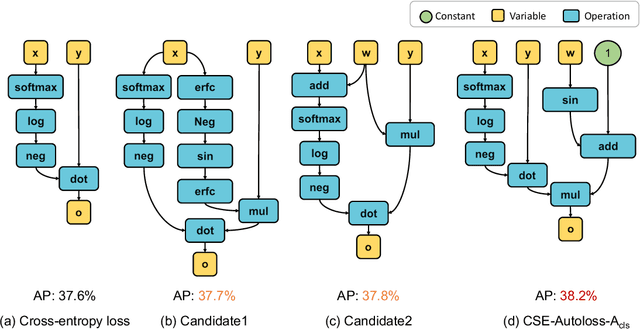
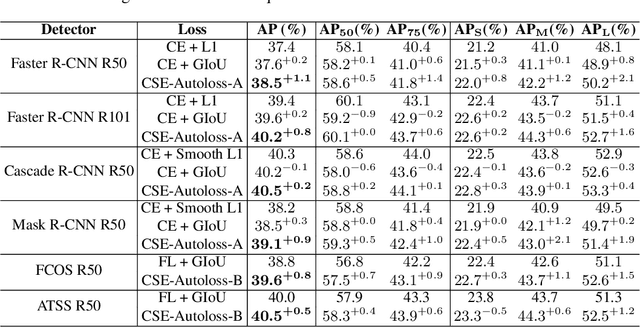
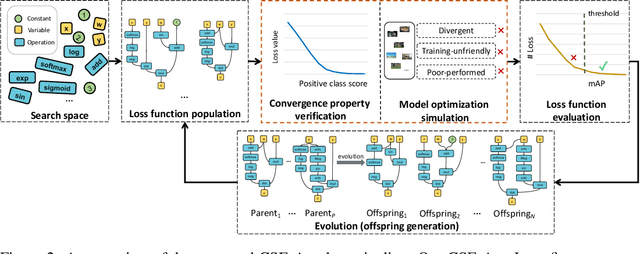

Abstract:Designing proper loss functions for vision tasks has been a long-standing research direction to advance the capability of existing models. For object detection, the well-established classification and regression loss functions have been carefully designed by considering diverse learning challenges. Inspired by the recent progress in network architecture search, it is interesting to explore the possibility of discovering new loss function formulations via directly searching the primitive operation combinations. So that the learned losses not only fit for diverse object detection challenges to alleviate huge human efforts, but also have better alignment with evaluation metric and good mathematical convergence property. Beyond the previous auto-loss works on face recognition and image classification, our work makes the first attempt to discover new loss functions for the challenging object detection from primitive operation levels. We propose an effective convergence-simulation driven evolutionary search algorithm, called CSE-Autoloss, for speeding up the search progress by regularizing the mathematical rationality of loss candidates via convergence property verification and model optimization simulation. CSE-Autoloss involves the search space that cover a wide range of the possible variants of existing losses and discovers best-searched loss function combination within a short time (around 1.5 wall-clock days). We conduct extensive evaluations of loss function search on popular detectors and validate the good generalization capability of searched losses across diverse architectures and datasets. Our experiments show that the best-discovered loss function combinations outperform default combinations by 1.1% and 0.8% in terms of mAP for two-stage and one-stage detectors on COCO respectively. Our searched losses are available at https://github.com/PerdonLiu/CSE-Autoloss.
UPDeT: Universal Multi-agent Reinforcement Learning via Policy Decoupling with Transformers
Feb 07, 2021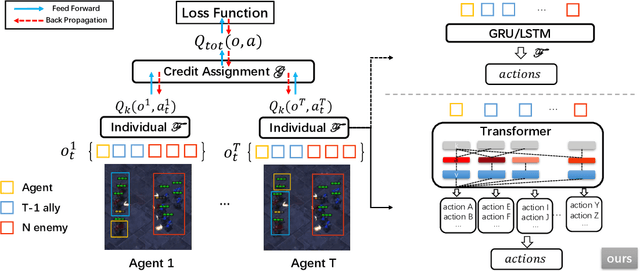
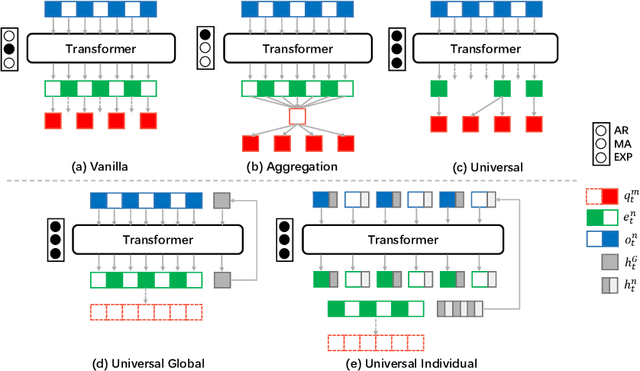
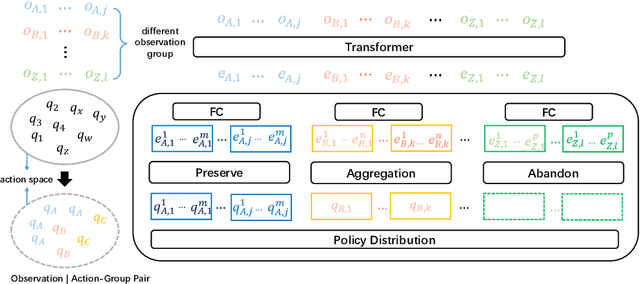
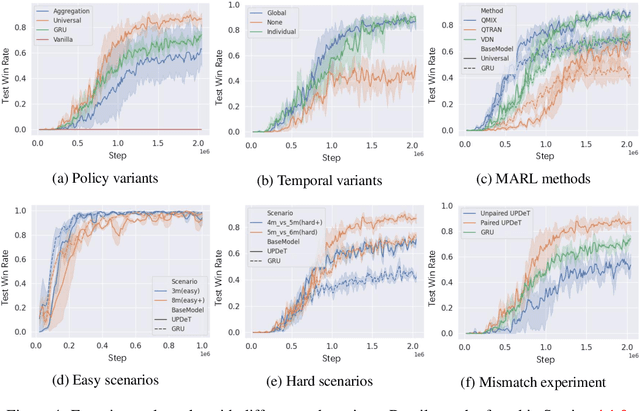
Abstract:Recent advances in multi-agent reinforcement learning have been largely limited in training one model from scratch for every new task. The limitation is due to the restricted model architecture related to fixed input and output dimensions. This hinders the experience accumulation and transfer of the learned agent over tasks with diverse levels of difficulty (e.g. 3 vs 3 or 5 vs 6 multi-agent games). In this paper, we make the first attempt to explore a universal multi-agent reinforcement learning pipeline, designing one single architecture to fit tasks with the requirement of different observation and action configurations. Unlike previous RNN-based models, we utilize a transformer-based model to generate a flexible policy by decoupling the policy distribution from the intertwined input observation with an importance weight measured by the merits of the self-attention mechanism. Compared to a standard transformer block, the proposed model, named as Universal Policy Decoupling Transformer (UPDeT), further relaxes the action restriction and makes the multi-agent task's decision process more explainable. UPDeT is general enough to be plugged into any multi-agent reinforcement learning pipeline and equip them with strong generalization abilities that enables the handling of multiple tasks at a time. Extensive experiments on large-scale SMAC multi-agent competitive games demonstrate that the proposed UPDeT-based multi-agent reinforcement learning achieves significant results relative to state-of-the-art approaches, demonstrating advantageous transfer capability in terms of both performance and training speed (10 times faster).
GTAE: Graph-Transformer based Auto-Encoders for Linguistic-Constrained Text Style Transfer
Feb 01, 2021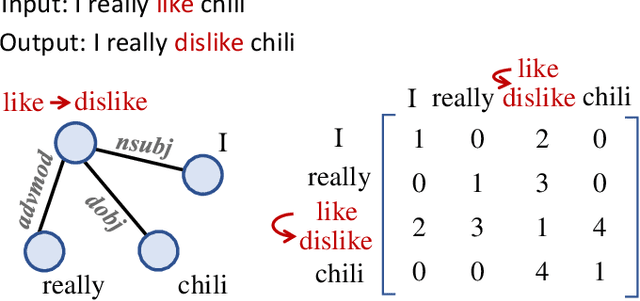
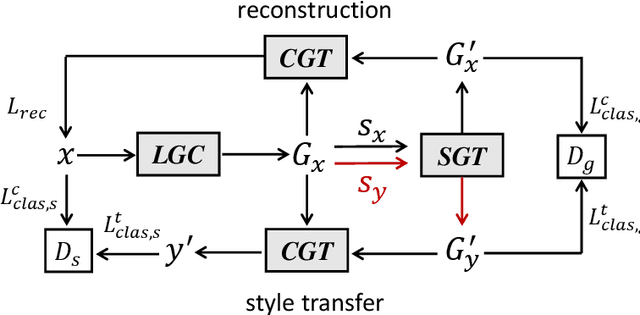

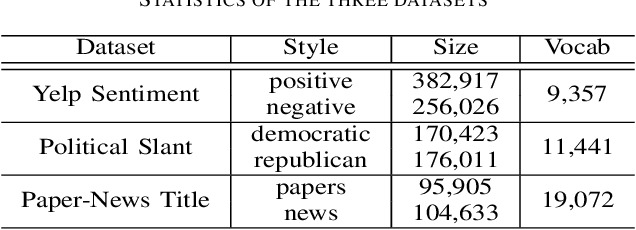
Abstract:Non-parallel text style transfer has attracted increasing research interests in recent years. Despite successes in transferring the style based on the encoder-decoder framework, current approaches still lack the ability to preserve the content and even logic of original sentences, mainly due to the large unconstrained model space or too simplified assumptions on latent embedding space. Since language itself is an intelligent product of humans with certain grammars and has a limited rule-based model space by its nature, relieving this problem requires reconciling the model capacity of deep neural networks with the intrinsic model constraints from human linguistic rules. To this end, we propose a method called Graph Transformer based Auto Encoder (GTAE), which models a sentence as a linguistic graph and performs feature extraction and style transfer at the graph level, to maximally retain the content and the linguistic structure of original sentences. Quantitative experiment results on three non-parallel text style transfer tasks show that our model outperforms state-of-the-art methods in content preservation, while achieving comparable performance on transfer accuracy and sentence naturalness.
Graphonomy: Universal Image Parsing via Graph Reasoning and Transfer
Jan 26, 2021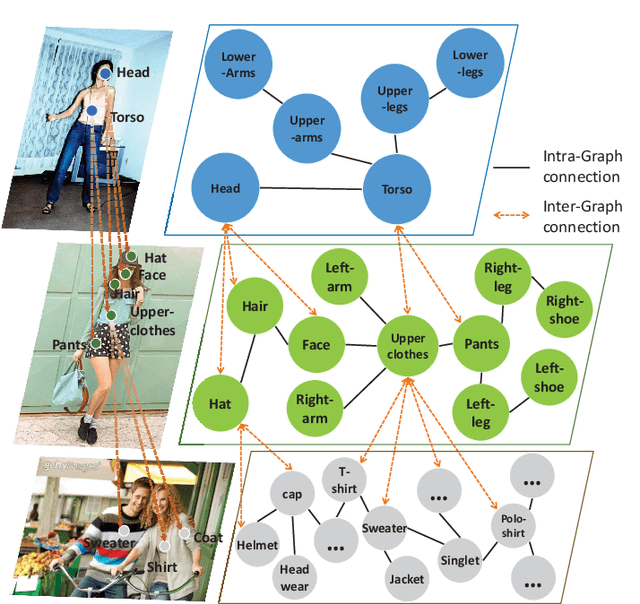
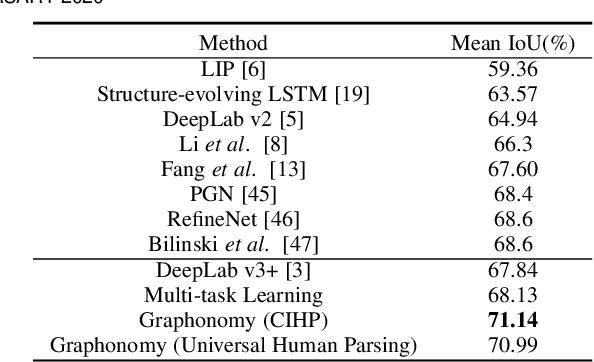
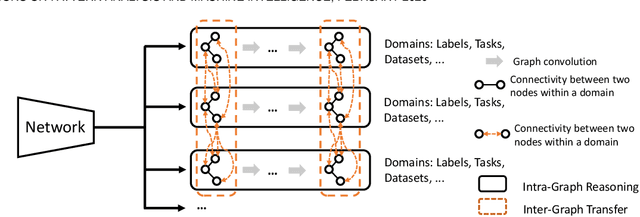

Abstract:Prior highly-tuned image parsing models are usually studied in a certain domain with a specific set of semantic labels and can hardly be adapted into other scenarios (e.g., sharing discrepant label granularity) without extensive re-training. Learning a single universal parsing model by unifying label annotations from different domains or at various levels of granularity is a crucial but rarely addressed topic. This poses many fundamental learning challenges, e.g., discovering underlying semantic structures among different label granularity or mining label correlation across relevant tasks. To address these challenges, we propose a graph reasoning and transfer learning framework, named "Graphonomy", which incorporates human knowledge and label taxonomy into the intermediate graph representation learning beyond local convolutions. In particular, Graphonomy learns the global and structured semantic coherency in multiple domains via semantic-aware graph reasoning and transfer, enforcing the mutual benefits of the parsing across domains (e.g., different datasets or co-related tasks). The Graphonomy includes two iterated modules: Intra-Graph Reasoning and Inter-Graph Transfer modules. The former extracts the semantic graph in each domain to improve the feature representation learning by propagating information with the graph; the latter exploits the dependencies among the graphs from different domains for bidirectional knowledge transfer. We apply Graphonomy to two relevant but different image understanding research topics: human parsing and panoptic segmentation, and show Graphonomy can handle both of them well via a standard pipeline against current state-of-the-art approaches. Moreover, some extra benefit of our framework is demonstrated, e.g., generating the human parsing at various levels of granularity by unifying annotations across different datasets.
Unifying Relational Sentence Generation and Retrieval for Medical Image Report Composition
Jan 09, 2021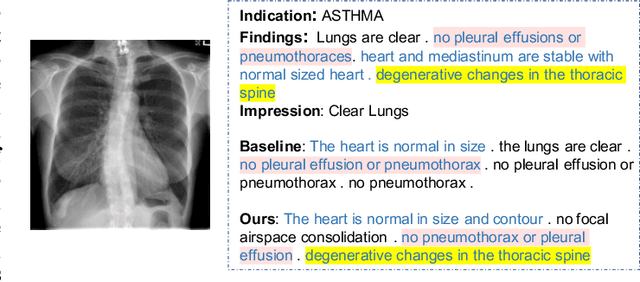
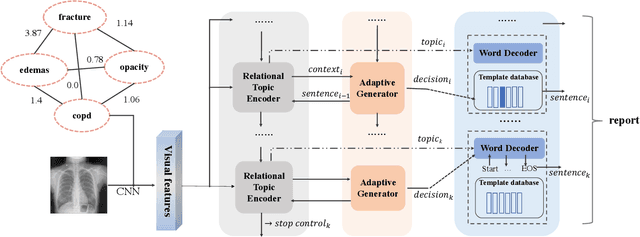
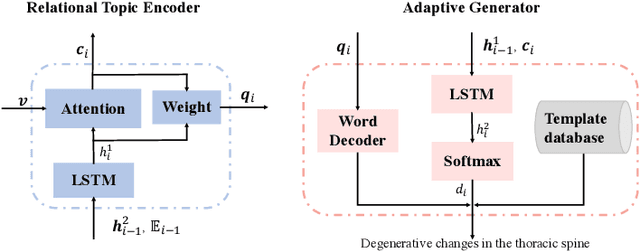
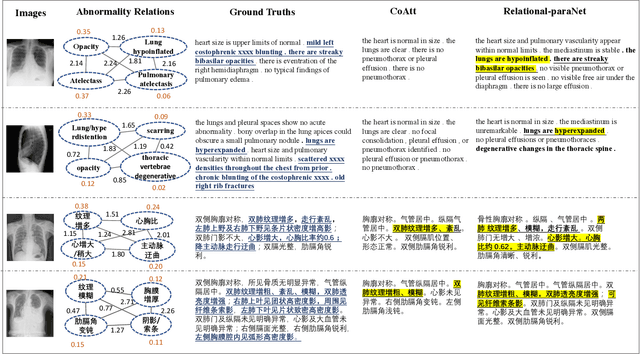
Abstract:Beyond generating long and topic-coherent paragraphs in traditional captioning tasks, the medical image report composition task poses more task-oriented challenges by requiring both the highly-accurate medical term diagnosis and multiple heterogeneous forms of information including impression and findings. Current methods often generate the most common sentences due to dataset bias for individual case, regardless of whether the sentences properly capture key entities and relationships. Such limitations severely hinder their applicability and generalization capability in medical report composition where the most critical sentences lie in the descriptions of abnormal diseases that are relatively rare. Moreover, some medical terms appearing in one report are often entangled with each other and co-occurred, e.g. symptoms associated with a specific disease. To enforce the semantic consistency of medical terms to be incorporated into the final reports and encourage the sentence generation for rare abnormal descriptions, we propose a novel framework that unifies template retrieval and sentence generation to handle both common and rare abnormality while ensuring the semantic-coherency among the detected medical terms. Specifically, our approach exploits hybrid-knowledge co-reasoning: i) explicit relationships among all abnormal medical terms to induce the visual attention learning and topic representation encoding for better topic-oriented symptoms descriptions; ii) adaptive generation mode that changes between the template retrieval and sentence generation according to a contextual topic encoder. Experimental results on two medical report benchmarks demonstrate the superiority of the proposed framework in terms of both human and metrics evaluation.
REM-Net: Recursive Erasure Memory Network for Commonsense Evidence Refinement
Jan 03, 2021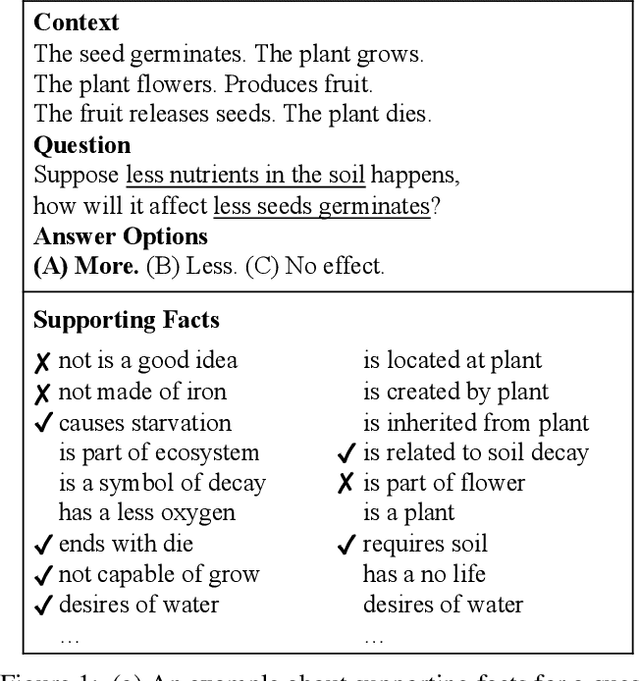
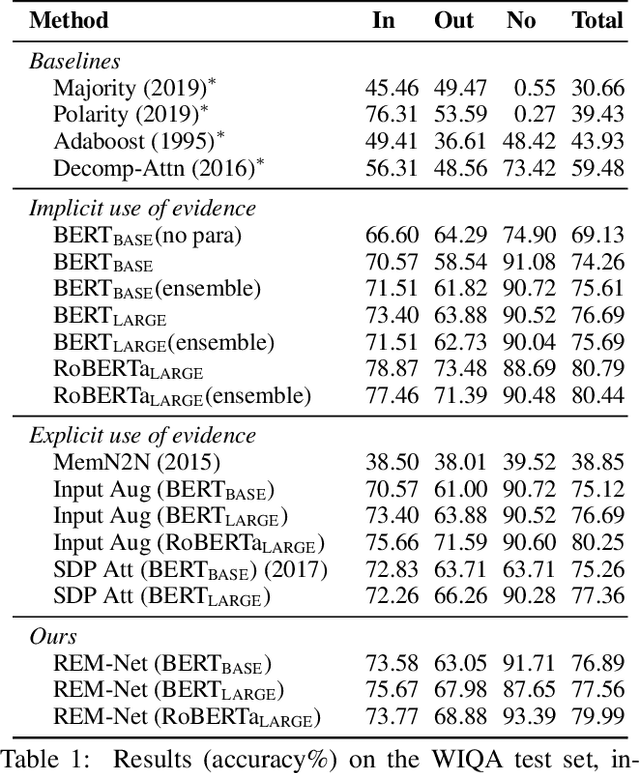
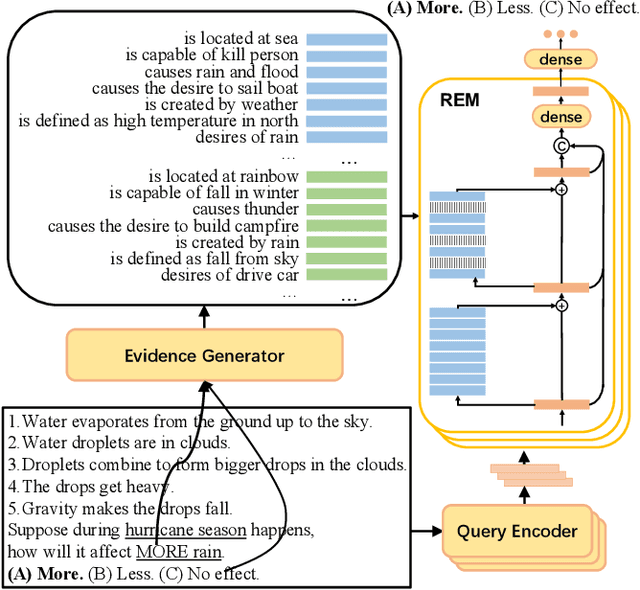
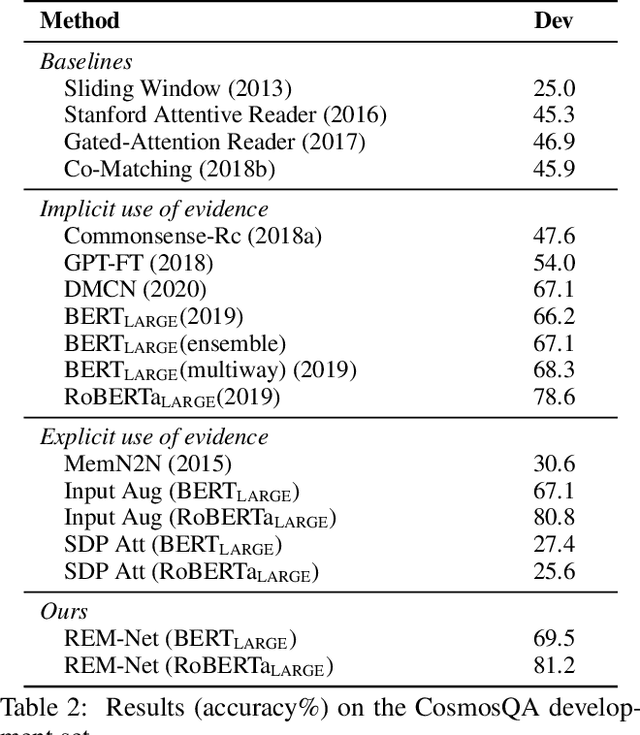
Abstract:When answering a question, people often draw upon their rich world knowledge in addition to the particular context. While recent works retrieve supporting facts/evidence from commonsense knowledge bases to supply additional information to each question, there is still ample opportunity to advance it on the quality of the evidence. It is crucial since the quality of the evidence is the key to answering commonsense questions, and even determines the upper bound on the QA systems performance. In this paper, we propose a recursive erasure memory network (REM-Net) to cope with the quality improvement of evidence. To address this, REM-Net is equipped with a module to refine the evidence by recursively erasing the low-quality evidence that does not explain the question answering. Besides, instead of retrieving evidence from existing knowledge bases, REM-Net leverages a pre-trained generative model to generate candidate evidence customized for the question. We conduct experiments on two commonsense question answering datasets, WIQA and CosmosQA. The results demonstrate the performance of REM-Net and show that the refined evidence is explainable.
Adversarial Meta Sampling for Multilingual Low-Resource Speech Recognition
Dec 23, 2020
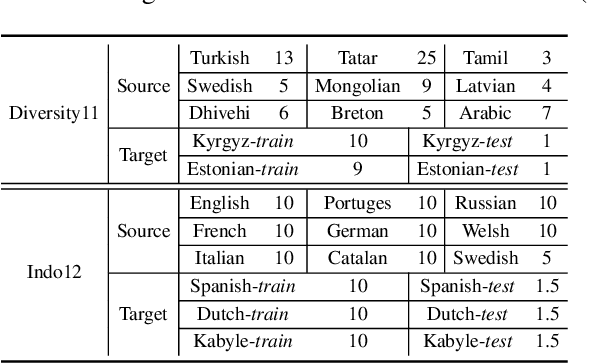
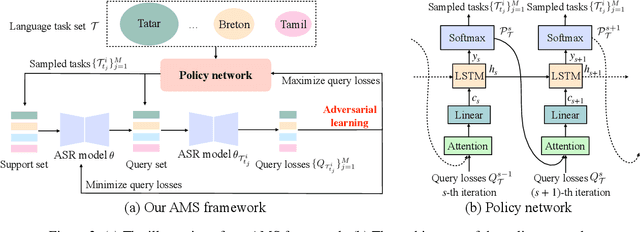

Abstract:Low-resource automatic speech recognition (ASR) is challenging, as the low-resource target language data cannot well train an ASR model. To solve this issue, meta-learning formulates ASR for each source language into many small ASR tasks and meta-learns a model initialization on all tasks from different source languages to access fast adaptation on unseen target languages. However, for different source languages, the quantity and difficulty vary greatly because of their different data scales and diverse phonological systems, which leads to task-quantity and task-difficulty imbalance issues and thus a failure of multilingual meta-learning ASR (MML-ASR). In this work, we solve this problem by developing a novel adversarial meta sampling (AMS) approach to improve MML-ASR. When sampling tasks in MML-ASR, AMS adaptively determines the task sampling probability for each source language. Specifically, for each source language, if the query loss is large, it means that its tasks are not well sampled to train ASR model in terms of its quantity and difficulty and thus should be sampled more frequently for extra learning. Inspired by this fact, we feed the historical task query loss of all source language domain into a network to learn a task sampling policy for adversarially increasing the current query loss of MML-ASR. Thus, the learnt task sampling policy can master the learning situation of each language and thus predicts good task sampling probability for each language for more effective learning. Finally, experiment results on two multilingual datasets show significant performance improvement when applying our AMS on MML-ASR, and also demonstrate the applicability of AMS to other low-resource speech tasks and transfer learning ASR approaches. Our codes are available at: https://github.com/iamxiaoyubei/AMS.
Graph-Evolving Meta-Learning for Low-Resource Medical Dialogue Generation
Dec 22, 2020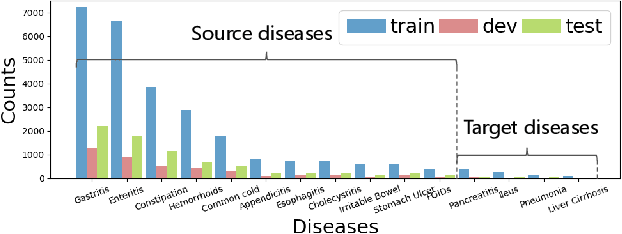
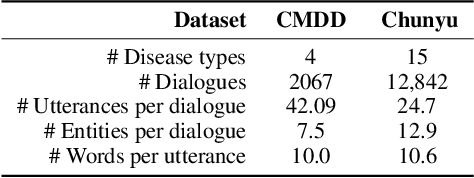
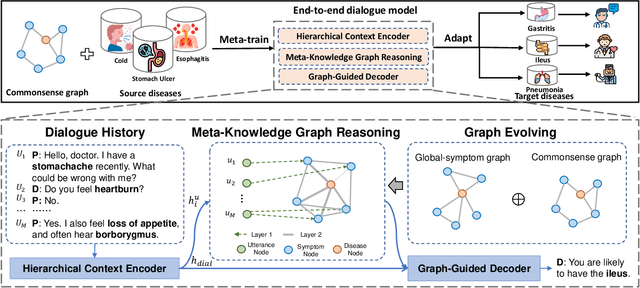
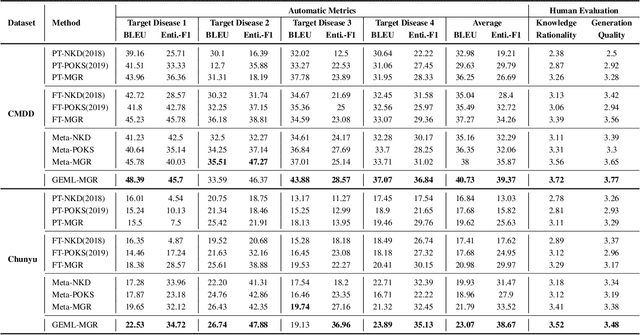
Abstract:Human doctors with well-structured medical knowledge can diagnose a disease merely via a few conversations with patients about symptoms. In contrast, existing knowledge-grounded dialogue systems often require a large number of dialogue instances to learn as they fail to capture the correlations between different diseases and neglect the diagnostic experience shared among them. To address this issue, we propose a more natural and practical paradigm, i.e., low-resource medical dialogue generation, which can transfer the diagnostic experience from source diseases to target ones with a handful of data for adaptation. It is capitalized on a commonsense knowledge graph to characterize the prior disease-symptom relations. Besides, we develop a Graph-Evolving Meta-Learning (GEML) framework that learns to evolve the commonsense graph for reasoning disease-symptom correlations in a new disease, which effectively alleviates the needs of a large number of dialogues. More importantly, by dynamically evolving disease-symptom graphs, GEML also well addresses the real-world challenges that the disease-symptom correlations of each disease may vary or evolve along with more diagnostic cases. Extensive experiment results on the CMDD dataset and our newly-collected Chunyu dataset testify the superiority of our approach over state-of-the-art approaches. Besides, our GEML can generate an enriched dialogue-sensitive knowledge graph in an online manner, which could benefit other tasks grounded on knowledge graph.
 Add to Chrome
Add to Chrome Add to Firefox
Add to Firefox Add to Edge
Add to Edge